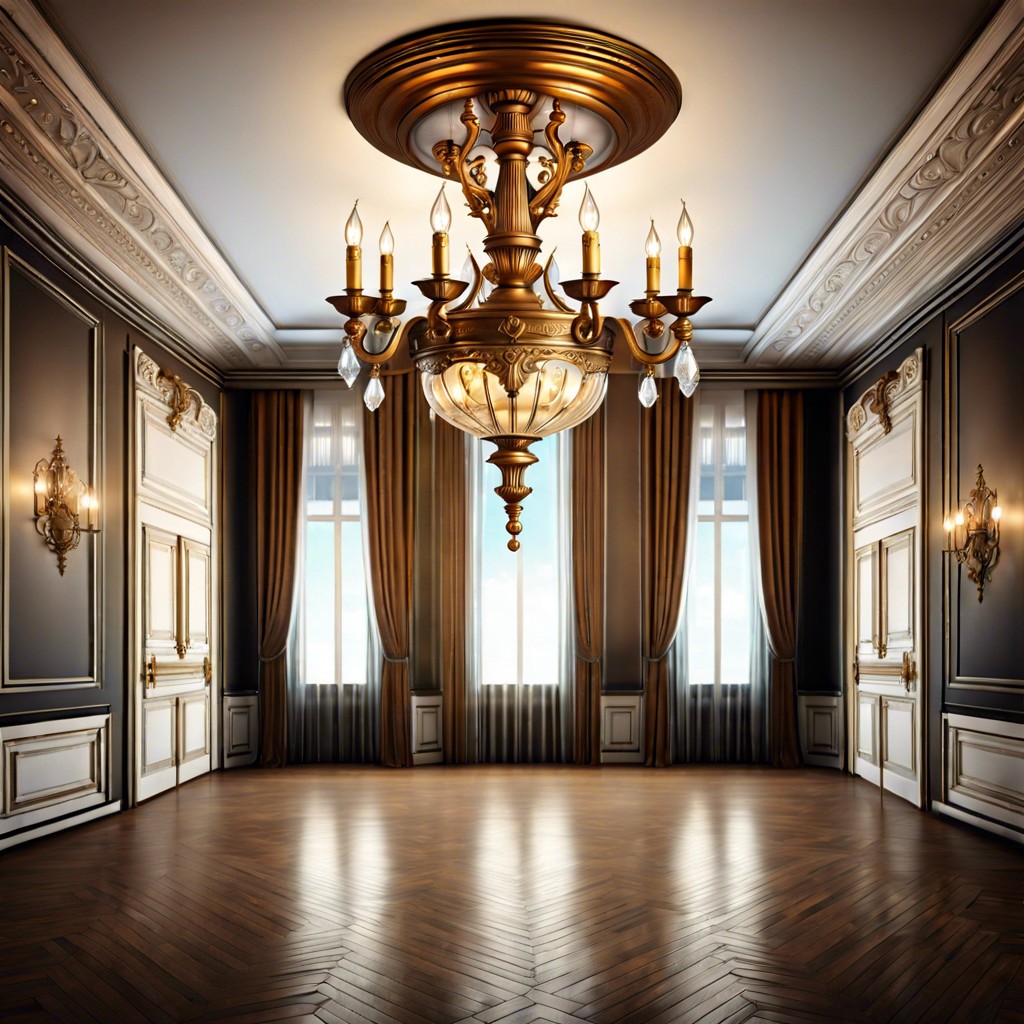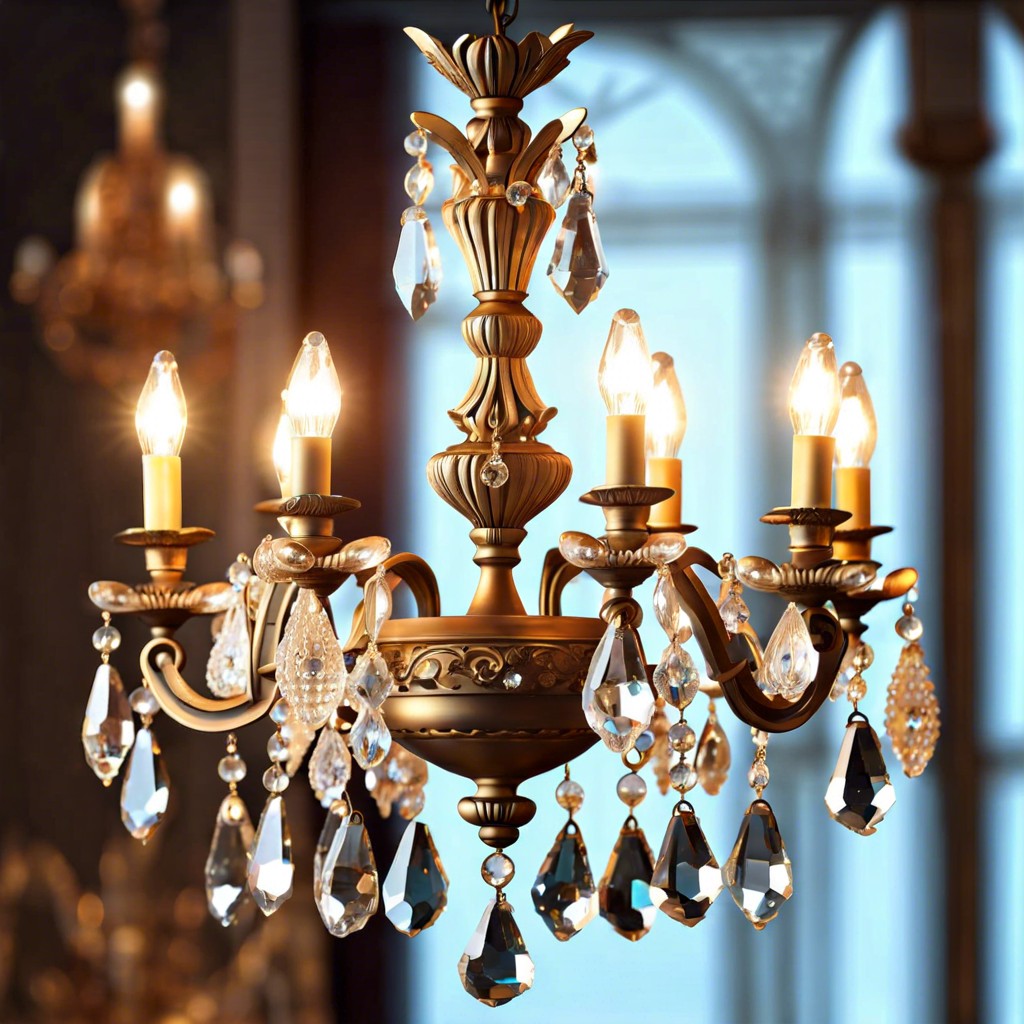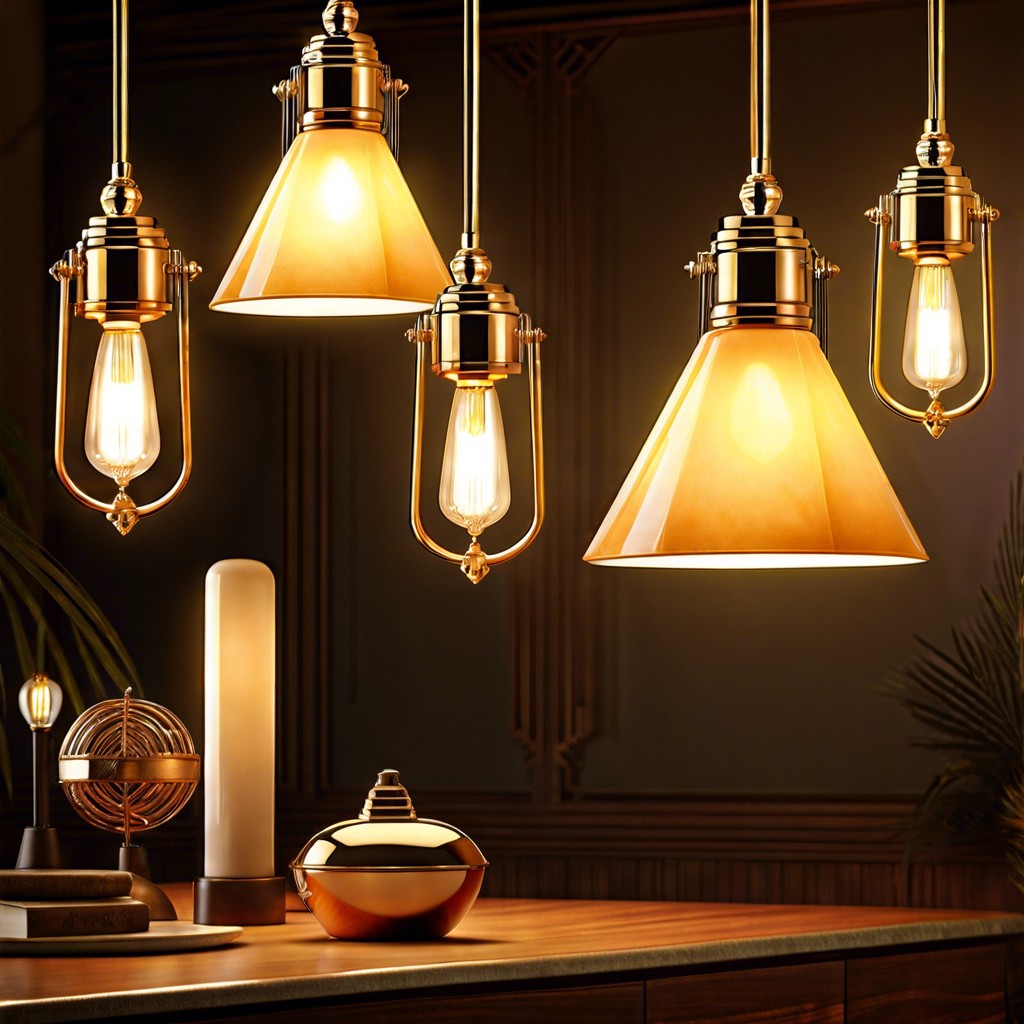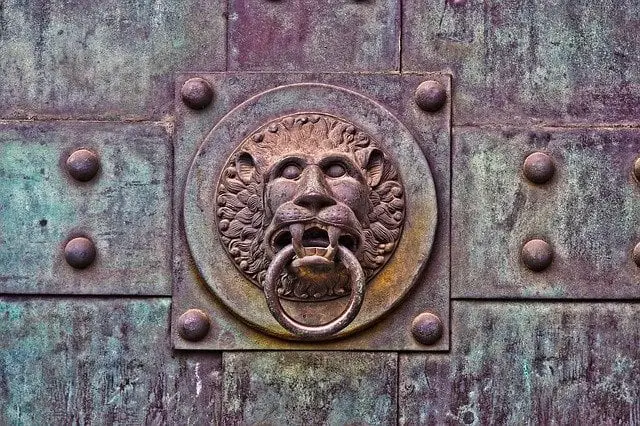Last updated on
Learn how to choose the right vintage chandelier that fits both your space and style.
Key takeaways:
- Vintage chandeliers are artifacts that reflect historical artistry and craftsmanship.
- Different styles, from crystal to Art Deco, showcase advances in design.
- Authenticating vintage chandeliers requires attention to materials and craftsmanship.
- Regular cleaning and maintenance are essential to preserving the chandelier’s appearance.
- Vintage chandeliers add elegance and historical charm to interior design aesthetics.
Historical Significance of Vintage Chandeliers

Vintage chandeliers are more than just lighting fixtures; they are artifacts that illuminate the cultural and technological advancements of past eras. Originating as early as the medieval times, these pieces initially used candles for illumination and were a symbol of wealth and status. As time progressed, the adoption of gas and eventually electricity led to more elaborate and intricate designs, incorporating materials such as crystals and precious metals.
Each era left its mark on chandelier design, reflecting the art and fashion trends of the period. For instance, the opulent designs of the Baroque period focused on dramatic, ornate details, while the minimalist approach of the Art Deco era embraced sleek, geometric shapes. This evolution makes vintage chandeliers a fascinating mirror of historical artistry and craftsmanship.
Collectors and interior designers prize these pieces not only for their aesthetic appeal but also for their ability to add a historical narrative to modern spaces. By integrating a vintage chandelier into a room, one essentially brings a piece of history home, creating a stunning focal point that sparks conversation and admiration.
Common Styles and Designs

Crystal chandeliers dominated European homes in the 18th century, their intricate designs reflecting opulent lifestyles. Often characterized by ornate arms and precision-cut glass, each piece was crafted to sparkle in candlelight.
By contrast, the American colonial style favored simpler, brass or wrought iron structures. The focus here was less on dazzle and more on craftsmanship and functionality.
Moving into the 20th century, Art Deco introduced geometric shapes and bold colors to chandelier design. These pieces often featured mixed materials, including glass, chrome, and even bakelite, reflecting modernity’s embrace of new industrial possibilities.
Each of these styles showcases not just a period’s taste but also advances in material and artistic expression. They remain popular choices today, demonstrating how lighting continues to play a pivotal role in interior design.
Identifying Authentic Vintage Chandeliers
Distinguishing a genuine piece from a reproduction can be like a treasure hunt. Pay special attention to materials and craftsmanship. Older chandeliers generally feature hand-forged metal, intricate glasswork, and natural patina on brass or copper elements. Check for slight asymmetries in handmade glass or crystal components, indicating they likely weren’t mass-produced.
Manufacturing marks also serve as valuable clues. Search for stamps, signatures, or labels from renowned makers. These are often located on the metal frame or canopy of the chandelier. If it’s a known brand, cross-reference the markings with documented company logos from the era it supposedly originates.
Additionally, wear patterns can tell a rich history. Examine areas prone to human touch, like chain links or adjustment screws, for authentic signs of aging. Over-polished metals or replacement parts could alter its historic integrity.
Consulting a specialist or using a magnifying glass to inspect finer details goes a long way in authenticating a vintage chandelier. Such diligence ensures your investment is as genuine as it is striking.
Maintenance and Care Tips
Keeping your vintage chandelier sparkling is simpler than it sounds. Regular dusting with a soft, dry cloth helps prevent buildup that can tarnish its appearance. For deeper cleaning, mix mild dish soap with warm water and gently wipe the components. Never use abrasive cleaners as they can damage the finish.
Ensure the chandelier’s wiring and fixtures are inspected by a professional every few years to maintain functionality and safety. This is crucial, especially for heavily embellished chandeliers that might house decades of electrical history.
Lastly, when replacing bulbs, opt for ones that match the era of the chandelier to maintain its historical integrity. Avoid overtightening the bulbs to prevent damage to the older, possibly delicate sockets.
Impact On Interior Design Aesthetics
Vintage chandeliers serve as more than just light sources; they transform spaces with a touch of elegance and historical charm. Their intricate designs can become the focal point of a room or complement a desired era-specific decor.
Incorporating a vintage chandelier into a modern space can add an unexpected layer of sophistication. It bridges the gap between contemporary minimalism and classic opulence, creating a dynamic, visually captivating environment.
For rooms with a vintage theme, chandeliers from the corresponding period reinforce authenticity. This consistency in design aids in crafting a cohesive and immersive atmosphere, whether it’s a Victorian-style parlor or a mid-century modern dining room.
By thoughtfully integrating vintage chandeliers, designers and homeowners alike can elevate the aesthetic appeal of their interiors, making a statement that celebrates both the past and present.
Related:




